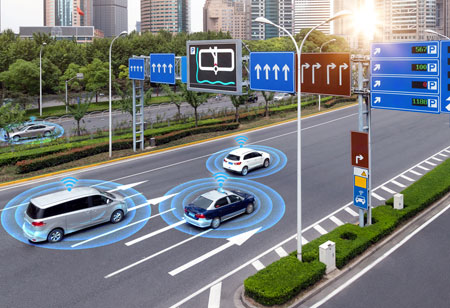Deep Learning algorithms and data mining can act as a backbone for supporting drivers with any risks and protection on the road ahead of time.
FREMONT, CA: The cost of designing advanced hardware and software to achieve a viable, autonomous, and connected vehicle infrastructure is substantial. Using smart simulation applications, firms can detect potential problems early and address them quickly. This aspect will help prevent costly pitfalls and guarantee that their proposals are tested before creating an expensive solution.
Use of Artificial Intelligence (AI) for Vehicle Simulation
For an autonomous vehicle to be an SAE level 5 vehicle and achieve 'Vision Zero' in principle, they should be safer than human operators without a position for the mistake. Deep Learning algorithms and data mining can act as a backbone for supporting drivers with any risks and protection on the road ahead of time. AI with deep learning algorithms can perform complex data-intensive calculations to read environmental information. It can also help move objects, pedestrians, traffic lights, other vehicle gestures, vehicle type identification, road background information
extraction, and efficient real-time connectivity to the connected infrastructure.
Simulation and Testing Steps
• In the case of connected cars, one needs to verify automobiles' connection to networks and vehicles to vehicle contact. For the new 5G, as the delay for data transfer decreases, data storage, and retrieval can be processed even quicker.
• The second aspect is the essential interpretation of the scene as it is an integrated part of the simulation, vehicles, cyclists, pedestrians, animals, and texture-map surface components. This instance is why businesses are carrying out simulations using the camera photos captured by self-driving cars.
• The development of a 3D world to simulate a data-driven framework with 3D geometry, semantics, presence of objects inside the scene and evaluate environmental conditions like snow, hailstorms, fog, heavy rainfall, sunshine, and simulation would examine the scene and make decisions based on various angles and distances.
• As the scenario evolves, the AI model should learn and adapt to the updated strategy and re-create additional data sets.
• If these components have been put into effect, one now needs to test cars from a simulated environment to a real road with safety.

 Copyright © 2025 AutoTech Outlook. All Rights Reserved | Privacy Policy | Subscribe | Sitemap | About us | Feedback Policy | Editorial Policy
Copyright © 2025 AutoTech Outlook. All Rights Reserved | Privacy Policy | Subscribe | Sitemap | About us | Feedback Policy | Editorial Policy